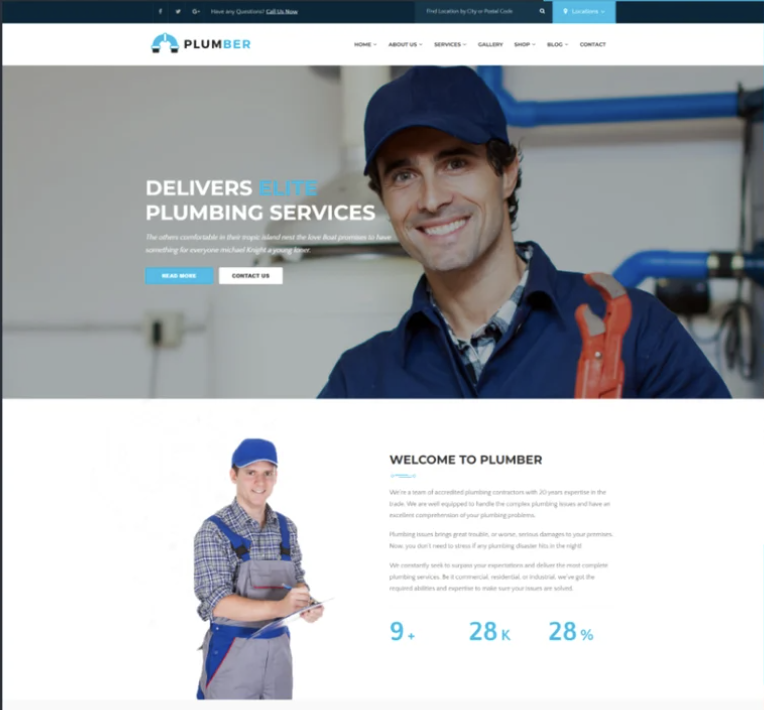The Ultimate Guide to Building High-Converting Plumbing Websites
Are you a plumbing contractor looking to attract more clients and grow your business? Building a high-converting plumbing website is the key to success in today’s digital world. In this ultimate guide, we will walk you through the steps to create a website that not only showcases your expertise but also converts visitors into loyal customers.
With the right design, compelling content, and strategic optimization, your plumbing website can rise above the competition and generate leads on autopilot. We’ll cover everything from choosing the right domain name and hosting provider to creating persuasive landing pages and implementing effective call-to-actions.
In addition to the technical aspects, we’ll also dive into the importance of local SEO for plumbing businesses and how to optimize your website to attract customers in your target area. You’ll learn proven strategies for ranking higher on search engines and gaining visibility in local searches.
By the end of this guide, you’ll have all the tools and knowledge you need to build a high-converting plumbing website that drives traffic, generates leads, and helps your business thrive. Don’t miss out on this opportunity to take your online presence to the next level. Let’s get started!
The importance of a high-converting plumbing website
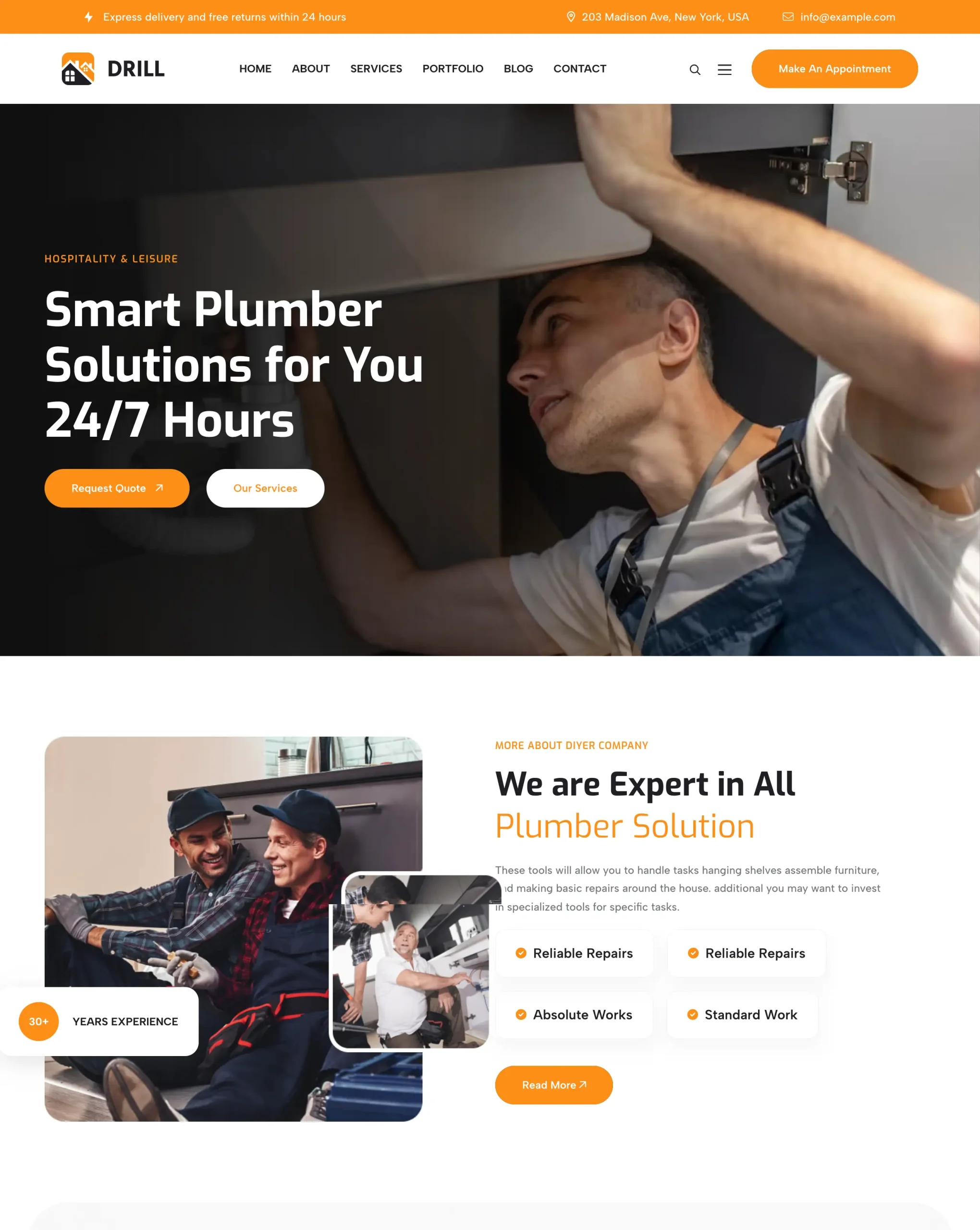
In today’s digital landscape, having a high-converting plumbing website is essential for any plumbing contractor who aims to thrive in a competitive marketplace. Your website serves as the online face of your business, acting as the first point of contact for potential customers. A well-designed website not only showcases your services but also builds credibility and trust with visitors. It’s crucial to create an online presence that reflects your professionalism and expertise, as this can significantly impact your ability to convert visitors into paying clients.
When potential customers search for plumbing services, they are often looking for immediate solutions to their problems. A high-converting website addresses this need by providing clear, accessible information about your services, pricing, and contact details. If your site is cluttered or difficult to navigate, visitors may quickly lose interest and turn to your competitors. Therefore, investing time and resources into building an effective website is an investment in the growth and sustainability of your plumbing business.
A high-converting website is not just about aesthetics; it is also about functionality and user experience. By focusing on both design and usability, you can create a platform that not only attracts visitors but also encourages them to take action—whether that means requesting a quote, scheduling a service, or simply reaching out for more information. The ultimate goal is to create a seamless experience that guides potential clients through the sales funnel, increasing the likelihood of conversion and long-term customer loyalty.
Understanding your target audience
To build a high-converting plumbing website, it’s imperative to have a thorough understanding of your target audience. Knowing who your potential clients are, what their needs are, and how they search for plumbing services can inform your website design and content strategy. Most plumbing customers are homeowners or property managers looking for reliable, quick solutions to their plumbing issues. They often search for local services, so understanding local demographics can help tailor your approach.
Conducting market research can give valuable insights into the preferences and pain points of your audience. Surveys, interviews, and social media interactions can provide information about what customers value most in a plumbing service—be it price, speed of service, or customer support. This knowledge can guide the content you create, ensuring it resonates with your audience and addresses their specific needs. For instance, if your research shows that your audience values quick response times, you can highlight your availability and prompt service in your website content.
Understanding your audience’s online behavior is crucial. Insights into how they find services—whether through search engines, social media, or referrals—can help you optimize your website accordingly. Tailoring your content to meet the preferences of your audience, such as including localized keywords or specific plumbing issues, can improve your chances of attracting the right visitors. Ultimately, a deep understanding of your target audience will enable you to create a website that engages and converts, ensuring that you meet their needs effectively.
Essential features of a high-converting plumbing website
When creating a plumbing website designed for high conversions, certain essential features must be included to ensure it meets the needs of your visitors. First and foremost, clear and concise service descriptions are fundamental. Visitors should be able to quickly understand what services you provide, whether it’s emergency repairs, routine maintenance, or installations. Each service page should include relevant details, such as pricing, benefits, and a call-to-action, encouraging users to reach out for more information or to book a service.
Another essential feature is a mobile-friendly design. With more people accessing websites via smartphones and tablets, your plumbing website must be responsive and user-friendly on all devices. A mobile-optimized site not only improves user experience but also positively impacts your search engine rankings. A significant portion of local searches is conducted on mobile devices, so ensuring your website looks great and functions well on smaller screens is critical for reaching potential clients.
Incorporating a contact form or booking system directly on your website can streamline the process for potential customers. This feature allows visitors to easily request quotes or schedule appointments without having to call, which can be a significant barrier for some users. Additionally, consider integrating live chat support to provide immediate assistance. This can enhance user engagement and improve conversion rates by making it easy for visitors to get their questions answered in real-time.
User-friendly navigation and layout
A user-friendly navigation system and layout are crucial components of a high-converting plumbing website. When visitors land on your site, they should be able to find the information they need quickly and effortlessly. A well-organized menu that categorizes your services and includes links to important pages, such as your contact information, about us section, and service areas, can significantly enhance user experience. Utilize drop-down menus to avoid clutter and ensure that essential information is only a click away.
In addition to a clear navigation structure, the layout of your website should be visually appealing and easy to digest. Use whitespace effectively to avoid overwhelming visitors with too much information at once. Each page should have a hierarchical structure, with headings and subheadings that guide readers through the content. Incorporating bullet points and short paragraphs can make information more accessible, allowing users to scan for key details quickly.
Consider implementing a search function on your website. This feature can be especially beneficial for larger sites with numerous pages. A search bar allows visitors to type in keywords or questions, leading them directly to the content they seek. This not only improves user experience but also reflects positively on your professionalism. Ultimately, a user-friendly navigation system and thoughtful layout can significantly boost the likelihood of converting visitors into clients.
Optimizing website speed and performance
Website speed and performance play a pivotal role in user experience and conversion rates. In today’s fast-paced digital world, users expect websites to load quickly. If your plumbing website takes too long to load, visitors are likely to become frustrated and abandon the site altogether. Studies show that even a one-second delay in page load time can lead to a significant decrease in conversions. Therefore, optimizing your website for speed is not just a technical requirement; it’s a critical aspect of your overall conversion strategy.
To enhance your site’s speed, start by evaluating your current performance using tools like Google PageSpeed Insights or GTmetrix. These tools can identify specific areas for improvement, such as image optimization, script minification, or caching strategies. Compressing images and using modern formats like WebP can greatly reduce loading times without sacrificing quality. Additionally, limiting the use of heavy graphics and unnecessary plugins can help maintain a leaner website that performs better.
Another strategy for improving website performance is to choose the right hosting provider. Opt for a hosting service that specializes in speed and uptime, as this can have a direct impact on your website’s performance. Consider options such as managed WordPress hosting if you are using that platform, as it often includes built-in performance optimizations. By prioritizing website speed and performance, you not only enhance user satisfaction but also improve your chances of converting visitors into loyal customers.
Creating compelling and informative content
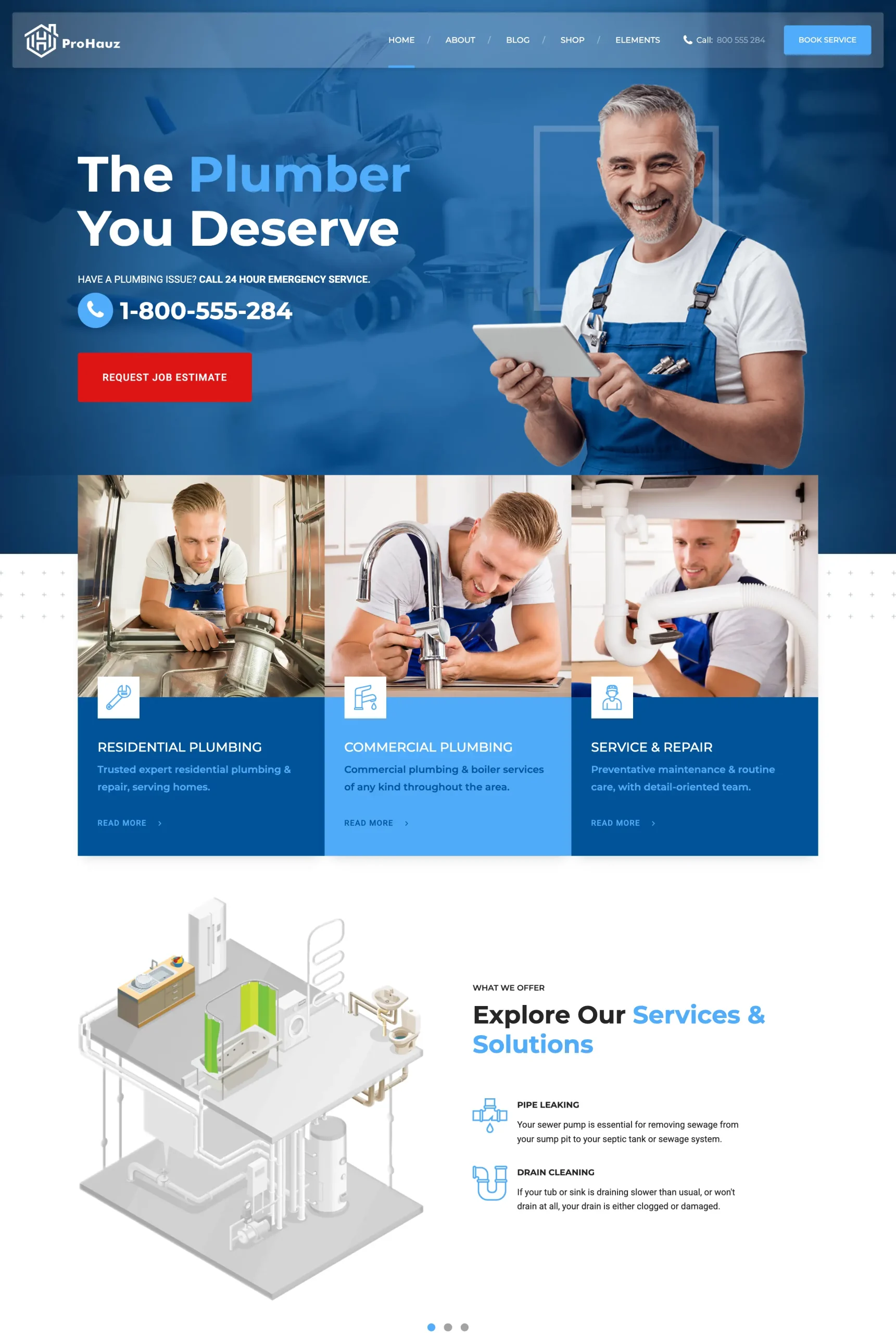
Content is king when it comes to building a high-converting plumbing website. Creating compelling and informative content can engage visitors while establishing your authority in the plumbing industry. Begin by developing a content strategy that focuses on relevant topics your target audience cares about. This could include blog posts on common plumbing issues, maintenance tips, or guides on how to choose a plumber. Such informative content not only helps your audience but also positions you as a knowledgeable resource in your field.
Incorporating storytelling into your content can further enhance engagement. Share real-life examples of how your services have helped previous customers, or discuss challenges you’ve overcome in your plumbing career. Personal anecdotes can create a connection with your audience, making your business feel more relatable and trustworthy. Additionally, using a conversational tone can make your content more approachable, encouraging visitors to spend more time on your site.
Lastly, don’t underestimate the importance of visual content. High-quality images and videos can complement your written content and make your website more attractive. Consider creating video tutorials on simple plumbing fixes or showcasing your team at work. Visual elements can help capture the attention of visitors and keep them engaged longer. By creating compelling and informative content, you increase the likelihood of converting visitors into customers while also improving your overall SEO efforts.
Incorporating SEO best practices
Incorporating SEO best practices into your plumbing website is essential for improving visibility and attracting organic traffic. Start by conducting keyword research to identify the terms and phrases potential customers are using when searching for plumbing services. Tools like Google Keyword Planner or SEMrush can help you discover relevant keywords to target in your content. Integrate these keywords naturally into your website’s copy, meta titles, and descriptions to enhance your chances of ranking higher in search engine results.
On-page SEO is another critical aspect to consider. Ensure that your website has well-structured URLs, descriptive alt text for images, and properly formatted headings. Each page should also include internal links to other relevant content on your site, which can help with navigation and keep visitors engaged longer. Additionally, ensure that your website’s mobile-friendliness and loading speed are optimized, as these factors can significantly impact your search engine rankings.
Local SEO is particularly important for plumbing contractors, as most customers search for services within their geographical area. Claim and optimize your Google My Business listing, ensuring that your business name, address, and phone number are consistent across all platforms. Encourage satisfied customers to leave positive reviews, as this can improve your local search rankings and attract more potential clients. By effectively incorporating SEO best practices, you can boost your website’s visibility and draw in more targeted traffic, ultimately increasing your conversion rates.
Utilizing effective call-to-actions
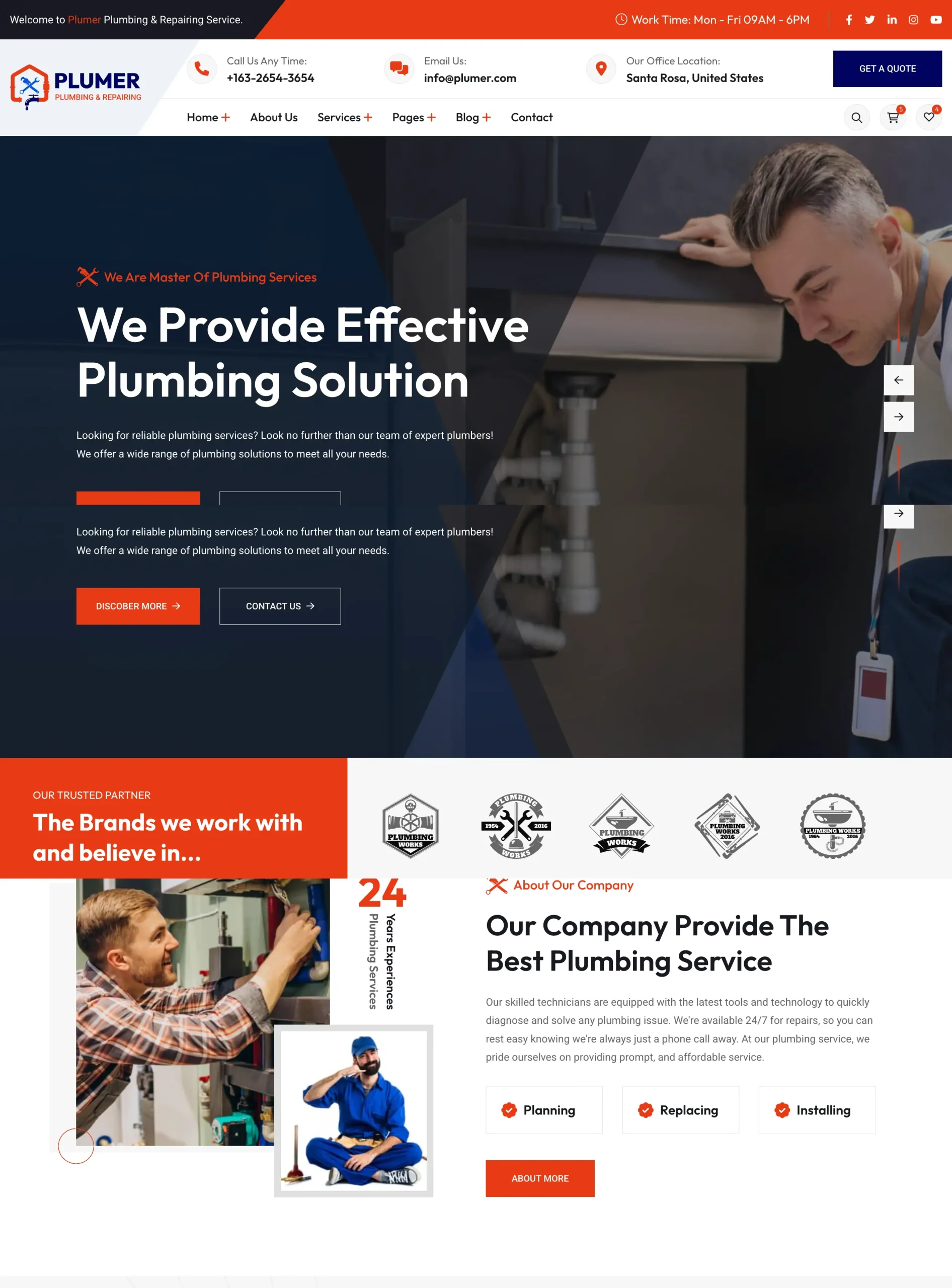
Utilizing effective call-to-actions (CTAs) is a fundamental element of a high-converting plumbing website. A CTA is a prompt that encourages visitors to take a specific action, whether it’s requesting a quote, scheduling a service, or signing up for a newsletter. The placement, design, and wording of your CTAs can significantly influence conversion rates, so it’s important to optimize them effectively. Ensure that CTAs are prominently displayed throughout your website, especially on service pages and at the end of blog posts.
The design of your CTAs should stand out without clashing with your overall website aesthetic. Use contrasting colors and clear, bold fonts to make them easily noticeable. Additionally, consider using action-oriented language that conveys urgency or value, such as “Get Your Free Estimate Today” or “Schedule Your Service Now.” This type of wording can motivate visitors to take immediate action rather than putting it off for later.
Testing different CTA variations can also yield valuable insights into what works best for your audience. Conduct A/B testing by creating two versions of a CTA with slight differences in wording, design, or placement. Analyzing the performance of each variant can help you determine which one resonates more with your visitors. By utilizing effective CTAs, you can guide visitors toward taking the desired actions, ultimately increasing your website’s conversion rates.
Building trust through testimonials and reviews
Building trust with potential customers is crucial for any plumbing business, and one of the most effective ways to achieve this is through testimonials and reviews. Positive feedback from satisfied clients can serve as powerful social proof, reassuring visitors that your services are reliable and effective. Feature testimonials prominently on your website, ideally on the homepage and service pages, to ensure they are easily accessible. Including the client’s name and location adds authenticity and helps potential customers relate to the experiences shared.
In addition to written testimonials, consider incorporating video reviews if possible. A video testimonial can be more impactful than text alone, as it showcases real people sharing their positive experiences with your plumbing services. This personal touch can significantly enhance credibility and foster trust with new visitors. Encourage your satisfied customers to share their experiences on platforms like Google My Business, Yelp, or Facebook, as these reviews can also improve your local SEO and attract more clients.
Regularly updating your testimonials and actively engaging with reviews—both positive and negative—can also further build trust. Responding to reviews shows prospective clients that you value customer feedback and are committed to providing excellent service. Addressing negative reviews promptly and professionally can turn a potentially damaging situation into a positive one, demonstrating your dedication to customer satisfaction. By effectively building trust through testimonials and reviews, you can increase the likelihood of converting visitors into loyal customers.
Conclusion
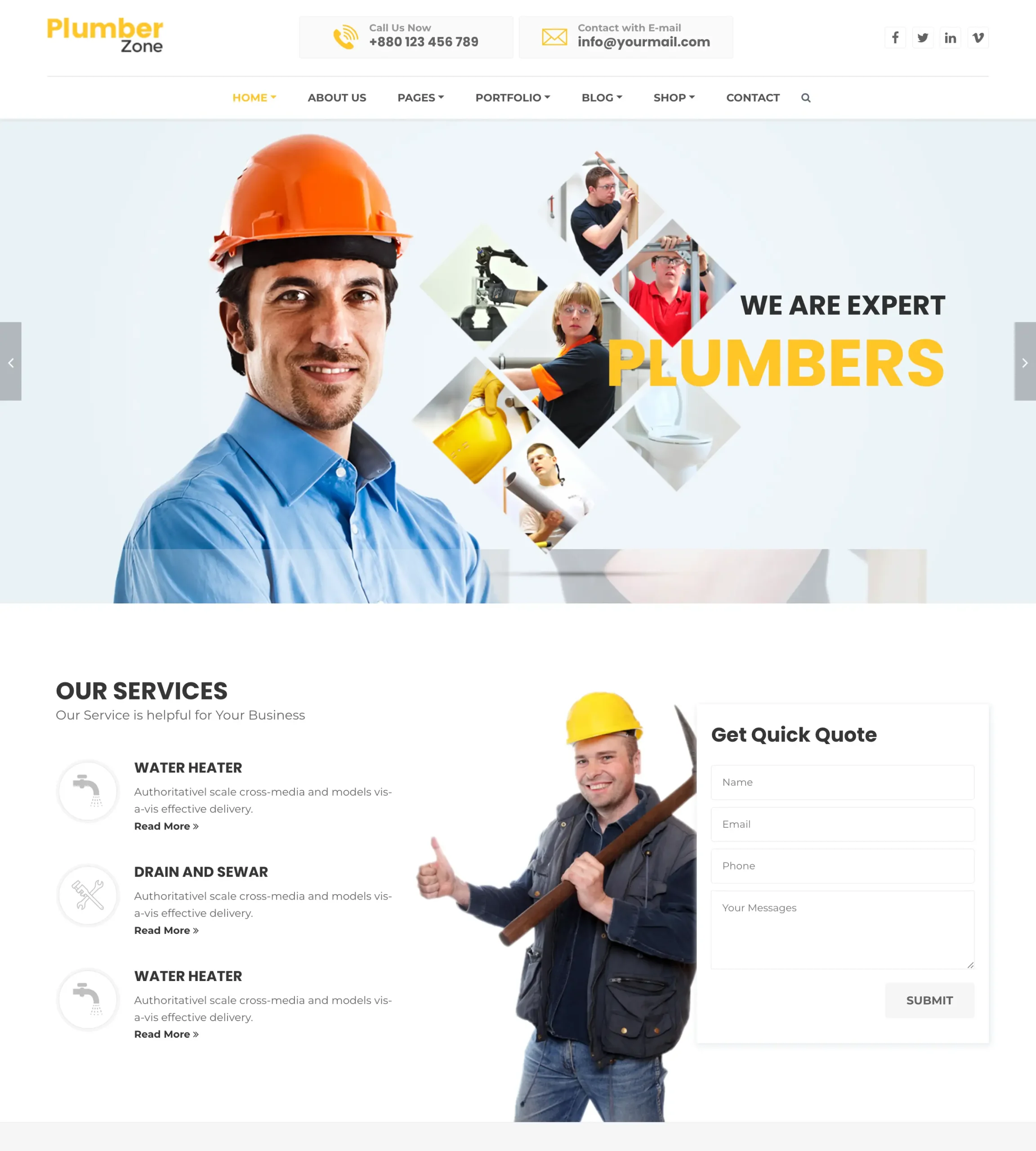
Building a high-converting plumbing website requires a strategic approach that encompasses a variety of elements. From understanding your target audience and incorporating essential features to optimizing for speed and performance, each component plays a pivotal role in attracting and converting visitors. Creating compelling content, integrating SEO best practices, and utilizing effective call-to-actions further enhance your website’s ability to generate leads and drive conversions.
Building trust through testimonials and reviews can significantly influence potential customers’ decisions, making them more likely to choose your services over competitors. As you implement these strategies, remember that the digital landscape is always evolving. Continuously monitor your website’s performance and make data-driven adjustments to improve user experience and conversion rates.
By following this guide, you can create a plumbing website that not only showcases your expertise but also converts visitors into loyal customers. Embrace the power of your online presence and watch your plumbing business thrive in today’s competitive market. Your high-converting plumbing website is just a few steps away—start building it today!
